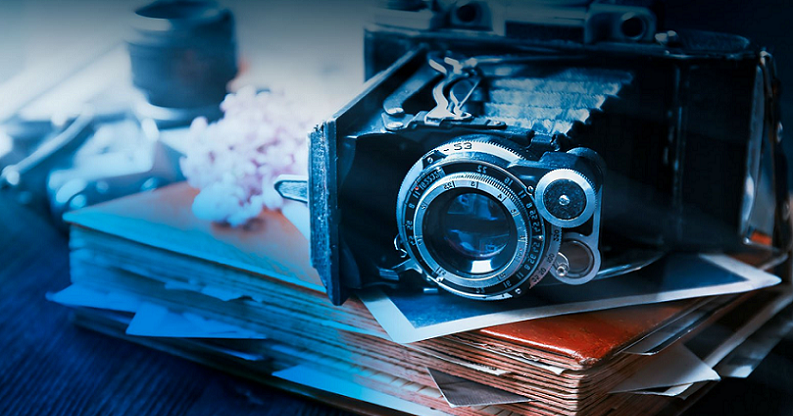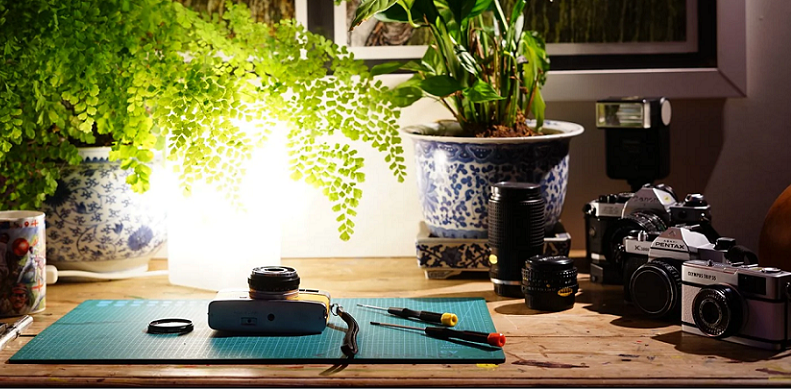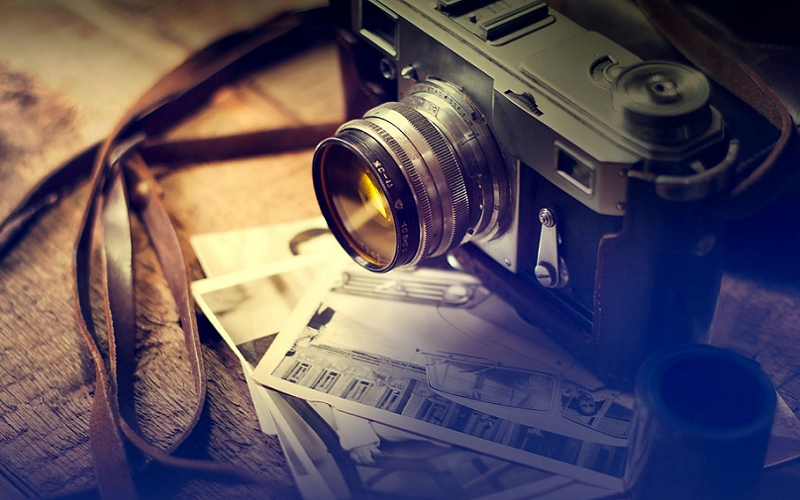Welcome to the enchanting world of vintage camera restoration, a craft where history, art, and technology intertwine to breathe new life into relics of the past. Here we embark on a journey through time, exploring the delicate art of restoring ancient photographic equipment. Vintage cameras are not just tools; they are storytellers, holding within their lenses and gears the tales of a bygone era. Restoring these cameras is more than a hobby; it’s a way of preserving the rich, often forgotten traditions of photography.
Introduction to Vintage Cameras
Vintage cameras, with their unique designs and mechanical complexities, are not just devices for capturing moments but are windows into the past, each with its own story to tell.
Explanation of Vintage Camera Restoration
Vintage camera restoration involves the careful and skillful revival of old and often deteriorating cameras. It is a process that requires patience, precision, and a deep understanding of the mechanical and aesthetic aspects of these historical devices. Restorers work to repair or replace damaged parts, clean intricate mechanisms, and restore the camera to its original, functional state.
This process not only revives the camera’s functionality but also preserves its aesthetic appeal and historical value. The aim is to maintain the integrity of the original design while ensuring the camera can still operate, allowing these vintage pieces to be appreciated both as functional devices and as historical artifacts.
Importance of Preserving Ancient Traditions in Photography
The art of vintage camera restoration goes beyond mere repair. It is a means of preserving ancient traditions in photography. Each camera from the past carries with it the techniques, styles, and innovations of its time. By restoring these cameras, we keep alive the diverse history of photographic technology and artistry.
This preservation is crucial in an era where digital photography dominates, as it provides a tangible link to the roots of photographic expression and creativity. Understanding and appreciating the evolution of cameras from their earliest forms to today’s advanced technology enriches our appreciation of photography and its journey through time [1].

The History of Vintage Cameras
Before we get into the specifics of vintage camera restoration, it’s essential to understand the rich and varied history of these devices. The evolution of cameras is a fascinating story, marked by innovation, creativity, and the relentless pursuit of capturing life’s moments. From rudimentary devices to sophisticated machinery, the history of cameras reflects the ingenuity and artistic spirit of different eras.
Early Camera Inventions and Innovations
The journey of the camera began in the early 19th century with the invention of the camera obscura, a simple device that projected images onto a surface. However, it was the advent of photographic film and the development of the daguerreotype in the 1830s that truly revolutionized the field. These early cameras were large, cumbersome, and required long exposure times, making photography a laborious process reserved for the dedicated few.
As technology advanced, so did the cameras. The late 19th and early 20th centuries witnessed significant innovations such as the dry plate process, roll film, and the first mass-produced camera, the Kodak Brownie, which made photography more accessible to the general public. These developments set the stage for an explosion of creativity and diversity in camera design and functionality [2].
Evolution of Camera Technology Through the Ages
Throughout the 20th century, camera technology continued to evolve rapidly. The introduction of 35mm film brought about a new era of compact and user-friendly cameras, epitomized by the iconic Leica I. The mid-20th century saw the rise of single-lens reflex (SLR) cameras, which offered photographers the ability to see exactly what the lens saw, revolutionizing photographic composition and technique.
The latter part of the century witnessed the introduction of electronic and digital technologies in cameras, fundamentally changing the way images were captured and processed. Despite these advancements, vintage cameras from various periods retain a charm and appeal that modern devices cannot replicate. Their mechanical simplicity, coupled with the tactile experience they offer, make them not just tools for photography but also pieces of history to be cherished and preserved.
Identifying Vintage Cameras
For enthusiasts and restorers, the first step in the journey of vintage camera restoration is identifying the cameras themselves. Vintage cameras come in various shapes, sizes, and designs, each reflecting the era and technology of its time. Knowing how to identify these cameras not only aids in restoration but also in appreciating their historical significance and value.
Key Characteristics of Vintage Cameras
Identifying vintage cameras involves examining several key characteristics. Firstly, the construction material can be a significant indicator of age. Early cameras were often made of wood, brass, or leather, while later models saw the introduction of plastic and lighter metals. The lens is another crucial aspect; older cameras typically have simpler lenses, often with minimal coating, unlike the multi-coated lenses of modern cameras.
The camera’s format and the type of film it uses are also telling. For instance, large format cameras, which use sheet film, and medium format cameras, which use 120 film, are generally older than 35mm film cameras. Additionally, the presence of certain features like rangefinders, viewfinders, or types of shutters can help pinpoint the era of the camera [3].
Tips for Beginners in Identification of Vintage Cameras
For beginners in the world of vintage camera collection and restoration, starting with some basic tips can be very helpful. First, familiarize yourself with the major camera brands and models from different eras, as this will provide a framework for identification. Online forums, books, and museums can be great resources for this information.
Next, learn to look for identifying marks or labels on the camera, such as serial numbers, model names, or manufacturer logos. These can often be found on the camera’s body, inside the film chamber, or on the lens. Additionally, understanding the basic mechanics and functions of different types of cameras (such as SLR, TLR, rangefinder) can aid in quick identification.
Lastly, don’t hesitate to reach out to communities of vintage camera enthusiasts. These groups can be incredibly knowledgeable and are often more than willing to help newcomers in identifying and learning about vintage cameras.

The Vintage Camera Restoration Process
Restoring a vintage camera is a delicate and intricate process that requires a blend of technical skill, patience, and a deep appreciation for the craft. It’s about more than just repairing a piece of equipment; it’s about reviving a piece of history.
Tools and Materials Needed for Vintage Camera Restoration
Before beginning any restoration project, it’s important to gather the right tools and materials. Essential tools include precision screwdrivers, tweezers, a soft brush, and a lens cleaning kit. For materials, you’ll need lubricants such as light machine oil, grease, and possibly some spare parts which can often be sourced from other damaged cameras or specialty suppliers.
It’s also wise to have a clean, well-lit workspace with plenty of room to lay out the camera components. Remember, vintage cameras can be delicate, so handle them with care and use tools gently to avoid causing any damage [4].
Step-by-Step Guide to Vintage Camera Restoration
- Initial Assessment: Begin by assessing the camera’s condition. Check for any visible damage, rust, or wear. Test the moving parts like the shutter, film advance, and aperture to see if they are functioning.
- Disassembly: Carefully disassemble the camera, taking note of where each part belongs. It can be helpful to take photos or make sketches during disassembly to ensure proper reassembly later.
- Cleaning: Clean each component thoroughly. Use a soft brush to remove dust and a cloth dampened with isopropyl alcohol for stubborn grime. Avoid using water or harsh chemicals that could damage the camera.
- Repair or Replace Parts: Inspect each part for damage. Some parts may need to be repaired, such as unjamming a stuck lens, while others may need to be replaced entirely.
- Lubrication: Properly lubricate moving parts to ensure smooth operation. Be careful not to over-lubricate, as excess oil can attract dust and cause problems down the line.
- Reassembly: Carefully reassemble the camera, referring to your notes, photos, or sketches. Ensure that all parts are correctly aligned and functioning.
- Testing: Once reassembled, test the camera to make sure everything is working correctly. Check the focus, shutter speeds, and film advance mechanism.
Handling Common Challenges
Restoration can present various challenges, especially with rarer or more damaged cameras. For instance, finding replacement parts for certain models can be difficult. In these cases, networking with other collectors or seeking out specialized suppliers can be invaluable.
Another common challenge is dealing with rust or corrosion, particularly in older metal cameras. This often requires careful cleaning and sometimes the application of rust removers or protectants. Patience is key here; rushing the process can cause more harm than good.
The Role of Technology in Vintage Camera Restoration
In the intricate world of vintage camera restoration, the interplay between age-old techniques and modern technology is fascinating. While the charm and authenticity of these cameras are rooted in their original designs and mechanisms, contemporary technology plays a crucial role in facilitating and enhancing the restoration process.
Modern Techniques in Preserving Old Cameras
Advancements in technology have introduced new methods and tools that can be invaluable in restoring vintage cameras. One such advancement is 3D printing, which allows for the reproduction of rare or unavailable parts. This technology can recreate gears, knobs, and even camera body parts that are no longer in production, maintaining the camera’s functionality without compromising its vintage character.
Digital imaging technology also aids in restoration. High-resolution scans and photographs can help in documenting the camera’s condition and intricacies before disassembly, providing a valuable reference during the restoration process. Additionally, image enhancement software can be used to better understand and visualize damaged areas, guiding restorers in their repair efforts.
Balancing Tradition with Innovation
While embracing these modern techniques, it’s crucial to maintain a balance between preserving the camera’s original essence and utilizing new technologies. The goal of restoration is to bring the camera back to its historical state, not to modernize it. Therefore, while 3D printed parts or modern lubricants are used, restorers strive to ensure that these interventions do not detract from the camera’s authentic feel and operation.
This balance extends to the philosophy of restoration as well. It involves respecting the craftsmanship and design of the original makers, understanding the historical context of the camera, and applying modern techniques judiciously to preserve these aspects. The challenge lies in using technology as a means to an end, rather than an end in itself.
References
[1] The Ultimate Guide to Camera Restoration and Repair
[2] Vintage Camera Restoration
[3] Vintage camera enthusiast hopes to share vast archive of notes and illustrations
[4] Restoring Antique Cameras

